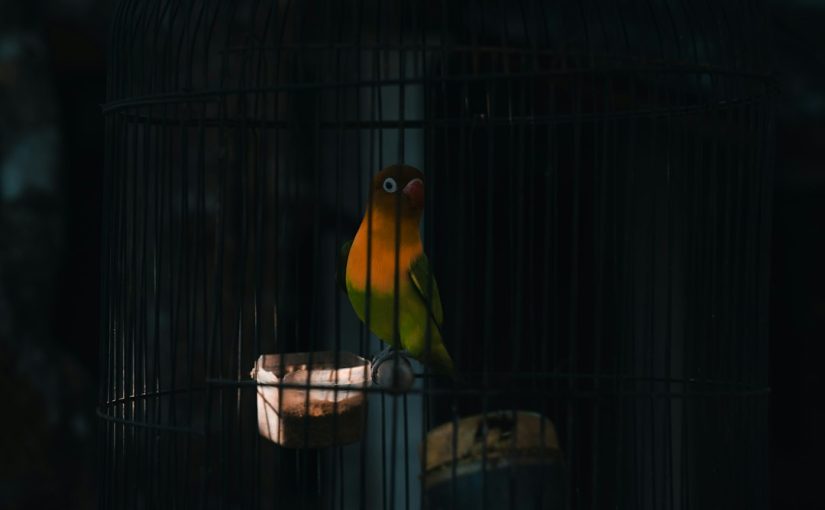If you’re looking to enhance your garden’s biodiversity and attract a vibrant array of avian visitors, the Crepe Myrtle (Lagerstroemia species) might be an unexpected champion. These popular ornamental trees, known for their stunning summer blooms and attractive exfoliating bark, offer far more than just aesthetic beauty. Beyond their visual appeal, Crepe Myrtles provide a valuable, multi-season haven for numerous bird species. From sugary nectar to a reliable source of winter sustenance, and even protective shelter, understanding the unique attributes of these trees can transform your backyard into a bustling bird sanctuary. Let’s delve into why these resilient beauties are a magnet for our feathered friends.
The multi-season appeal of crepe myrtles
Crepe Myrtles are often celebrated for their spectacular, long-lasting summer flowers, but their attractiveness to birds extends far beyond their showy blossoms. These deciduous trees offer a dynamic habitat throughout the year, making them a consistent draw for avian life. In spring, their emerging foliage and buds can attract early insect activity, providing a food source for migratory birds. As summer progresses, the dense canopy offers cool shade and potential roosting spots. Come autumn, the foliage often turns brilliant shades of red, orange, and yellow, adding aesthetic value while the tree prepares for its next phase of utility. Even in winter, after the leaves have fallen, the unique, peeling bark provides texture and character, and more importantly, the persistent seed pods become a critical food source, standing tall when much of the landscape is barren.
Floral nectar and insect buffet
During their prolific blooming period, typically from summer into early fall, Crepe Myrtles are a hive of activity, thanks to their abundant flowers. The vibrant, crinkled petals produce nectar, a high-energy food source that is particularly irresistible to hummingbirds. Species like the Ruby-throated Hummingbird are often observed flitting among the blossoms, taking advantage of this sweet bounty. Beyond nectar, the flowers and foliage also attract a variety of insects, including small bees, butterflies, and various caterpillars. These insects form a crucial protein-rich diet for many bird species, especially during nesting season when parents need to feed their hungry chicks. Warblers, vireos, and chickadees are just a few examples of insectivorous birds that will readily forage among Crepe Myrtle branches, gleaning unsuspecting prey.
Seed pods: A winter feast
One of the most significant, yet often overlooked, contributions of the Crepe Myrtle to bird sustenance comes from its persistent seed pods. After the flowers fade, small, round capsules form, which mature and eventually dry, splitting open to release tiny, winged seeds. These seeds remain on the tree well into the fall and winter months, providing a vital food source when other natural food options are scarce. This makes Crepe Myrtles an invaluable asset for overwintering birds. Gardeners often observe a flurry of activity around these trees during colder periods, as various species flock to enjoy the readily available meal.
| Bird Species | Primary Food Source from Crepe Myrtle |
|---|---|
| American Goldfinch | Small seeds from dried pods |
| Dark-eyed Junco | Seeds that fall to the ground or from pods |
| House Finch | Seeds from dried pods |
| Pine Siskin | Small seeds from dried pods |
| Sparrow species (e.g., Chipping Sparrow) | Seeds from dried pods and ground |
Shelter and nesting opportunities
Beyond food, Crepe Myrtles provide essential structural benefits that make them attractive to birds. The dense, multi-stemmed growth habit of many varieties, combined with their relatively compact size, creates excellent cover and shelter. Birds use these trees for protection from predators, roosting spots during inclement weather, and safe places to rest overnight. The intricate network of branches also offers potential nesting sites. While larger raptors might find them too small, smaller songbirds can construct their nests securely within the foliage, benefiting from the natural camouflage and protection. Observing birds build nests and raise their young within your Crepe Myrtle is a testament to its value as a genuine haven for local avian populations.
In summary, the Crepe Myrtle stands as a remarkably versatile and bird-friendly choice for any landscape. Its year-round appeal, beginning with the summer’s vibrant nectar and insect offerings, transitioning to essential seed pods providing critical winter sustenance, and culminating in reliable shelter and potential nesting sites, creates a complete ecosystem. By planting Crepe Myrtles, you are not merely adding an attractive ornamental tree to your garden; you are establishing a dynamic habitat that supports avian life across all seasons. Embrace the beauty and ecological value of these remarkable trees, and watch as your garden flourishes with the delightful presence of various bird species, bringing life and melody to your outdoor space.
Image by: sander traa
